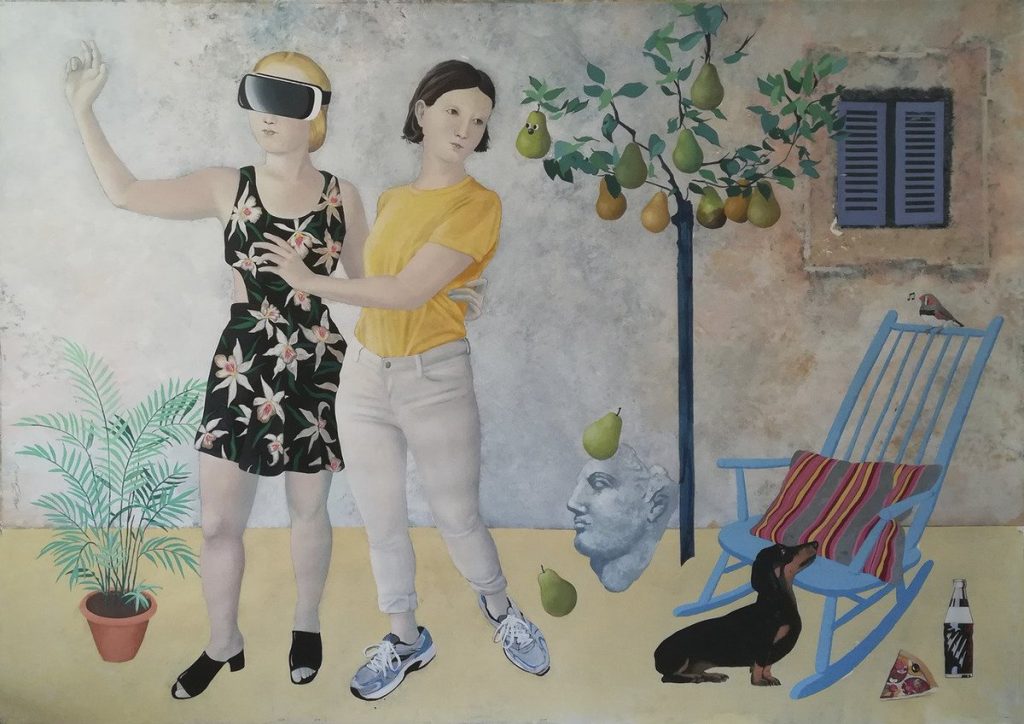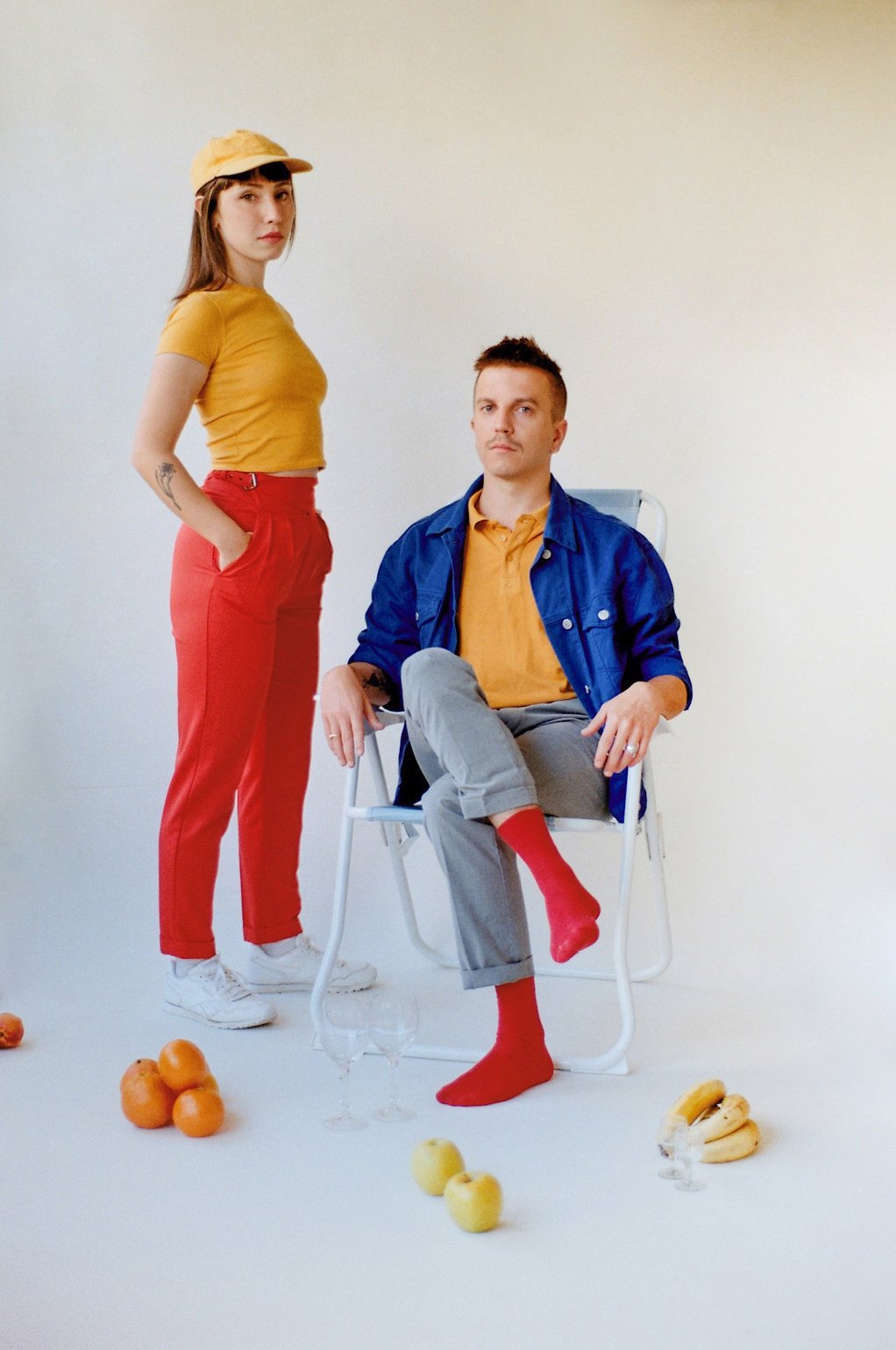
We came across artistic duo Dea Gómez and Diego Omil’s work through the Lyle O. Reitzel Gallery. They are multidisciplinary artists taking influences from the different cities they’ve lived in. Talking to them, I’ve learned about their latest artist residency in London and upcoming exhibition while also discussing their interests in anthropological research and societies.
What has been the process that led to artist residencies in different cities throughout your careers?
Artistic residency scholarships are common practice in the art world and they turn out to be very creatively stimulating. They allow us to enrich our work by making contact with different cultural environments and, what is very important, to personally meet artists from other countries with whom to exchange ideas and knowledge. In these trips that we have made, we always try to soak up the place and this leaves its mark on our work. We try to give a biographical patina to the paintings we make as a way of bearing witness to the time.
What Italian Renaissance artists influenced your work and how does it translate to contemporary art?
We have studied in depth that stage of Art History, and we were lucky to live in Italy for a year and take the opportunity to visit not only its famous museums, but also small places in remote cities where authentic palazzos and churches hide artistic jewels. We try to recycle the language of this period and put it in relation to contemporary artistic practice resources, such as design, comics or digital art. When we are in the workshop, our effort is focused on balancing the tension between tradition and modernity.

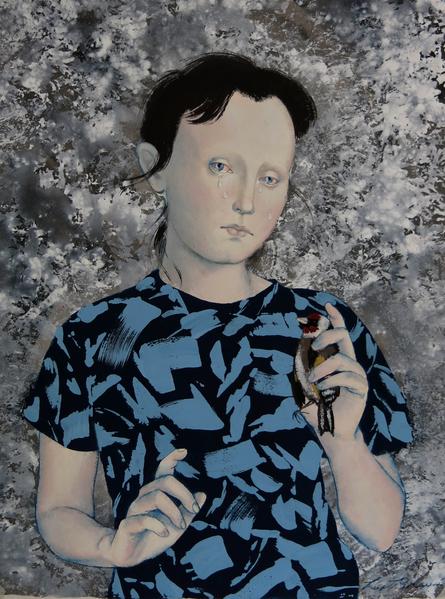
Has your anthropological research led you to discover insights from different locations? Can you share examples?
We enjoy tracking cultural influences that have traveled from one place to another in the world, those connections are what make us understand how we relate to our environment. It is curious, for example, the way in which the West has images at the core of all its culture, and yet in other societies such as Africa, sound is the fundamental engine. However, the cultural exchange brought about new forms and artistic expressions, we appreciated this very clearly in 2019, painting during the same year in the Dominican Republic, Spain and Senegal.
Congratulations on being awarded the solo residency at Unit 1 Gallery in London! What can you tell us about your experience there so far? What can we expect from your upcoming exhibition?
It is fortunate to have such a large and bright work space in a city as cosmopolitan as London. We are going to paint daily but the experience has been profoundly conditioned by COVID-19. Since everything has been closed, much of our free time is spent wandering through its streets for hours, it is usual for us to do stages of more than 20km. The new paintings we are making are deeply marked by this experience. These last days it seems that the city is starting to resume its usual rhythm and we hope that by the last week of August we can open the exhibition and invite as many people as possible.
“We try to give a biographical patina to the paintings we make as a way of bearing witness to the time.”
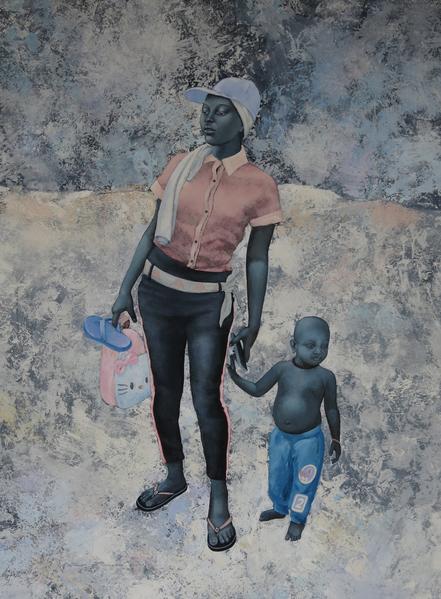
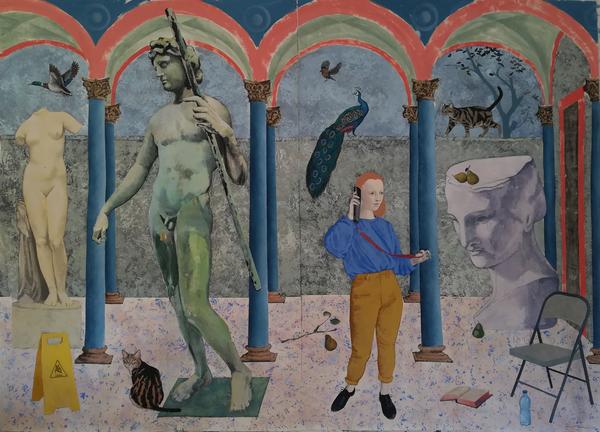
What is the role of art & what are your roles as artists?
We have asked ourselves this question many times, we suppose that when you start making art you feel a force that drags you without knowing very well where. In our case, we decided to focus on our own experience, our life, the trips and the people we meet along the way. We use art as a journal that somehow serves other people both intellectually and for aesthetic rejoicing that makes them happier.
Is there something you dislike about the art world? If so, how would you change it?
When we started we dedicated ourselves to self-edit our own fanzines with paintings or stories, there was a great independent circuit where the camaraderie was very important and there was true love for artistic expression and culture. Sometimes we feel that contemporary art is too influenced by a certain pose that detracts from the environment and makes it somewhat frivolous. Fortunately, we have met artists, gallery owners, and collectors who fight every day to maintain the passion and make this worthwhile. In the end, it is what we are left with, those moments between friends sharing and enjoying together.
What advice can you give to artists starting out on developing relationships with art dealers and gallerists?
The most important thing is to contribute to creating a good artistic scene in your city, where the different cultural agents benefit from each other. A good atmosphere will contribute to generating a stable platform with which to promote art.
